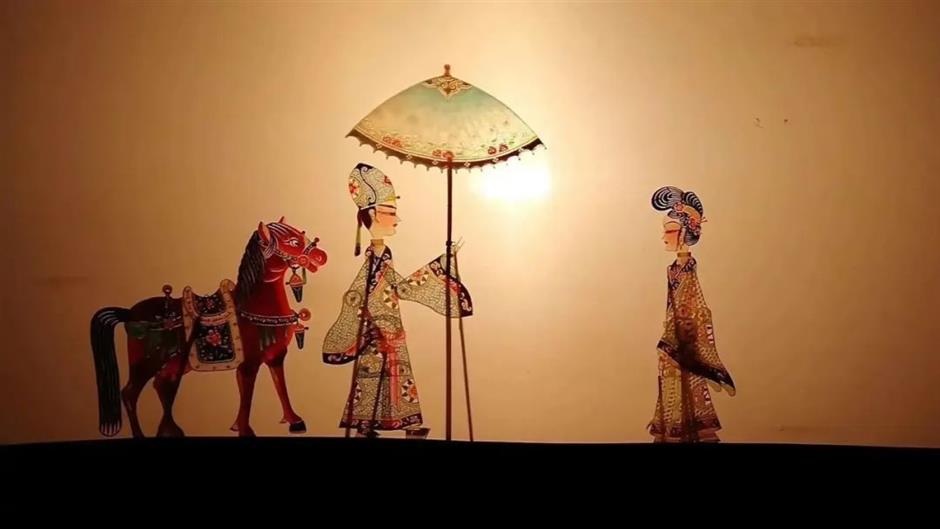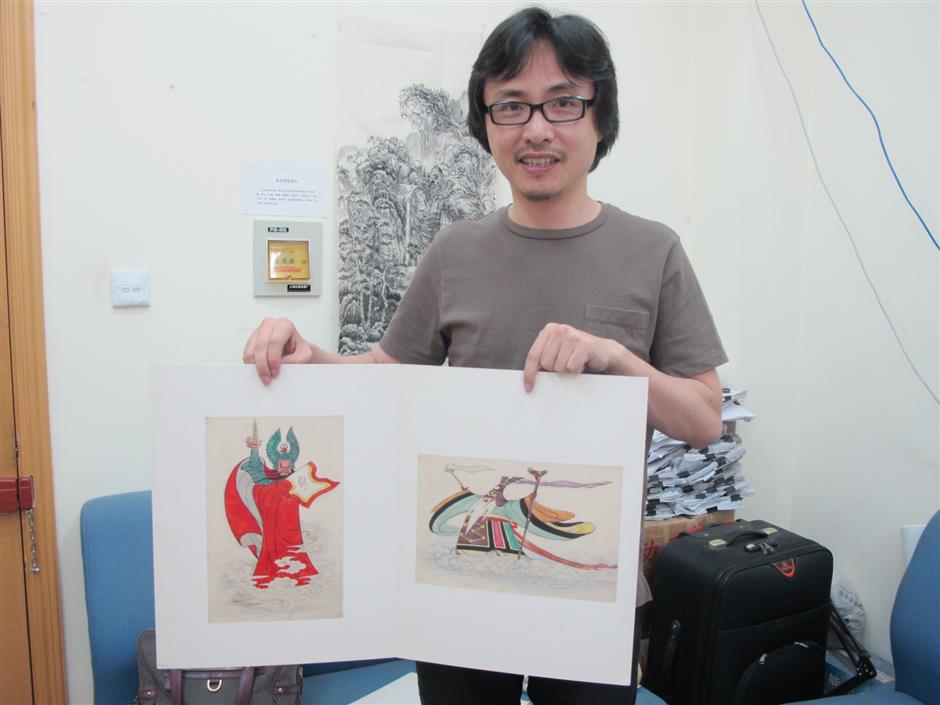'Lights, Camera' presents: Animation in China

A poster advertises the Chinese animated film 'White Snake.'
Welcome to the cultural column "Lights, Camera."
Following a series of Shanghai's most popular and potential locations for filming, we will continue to showcase the city's abundant cinematic heritage, tradition, and resources through a new series about the origin and evolution of Chinese animation.
Just like the sci-fi genre, China's animation industry is increasingly appealing to a global market. Significant strides into international markets have been made by homegrown animated films such as "New Gods: Yang Jian," "New Gods: Nezha Reborn," and "White Snake," with major progress in visuals, imagination, and storytelling. The popularity of these productions has also boosted Chinese animators' confidence to compete with Hollywood blockbusters.

A poster advertises 'New Gods: Yang Jian.'

The Wan brothers were the founders and pioneers of the animation industry in China. From left, Wan Laiming, Wan Guchan, Wan Chaochen, and Wan Dihuan.
When it comes to China's animation, the Wan brothers -- Wan Laiming, Wan Guchan, Wan Chaochen, and Wan Dihuan -- were the founders and pioneers of the animation industry in the country.
In the late 19th century, the world's first animations were created by French scientist Charles-Émile Reynaud, who is also the inventor of the animation systems praxinoscope and Theater Optique, the first presentation of projected moving images to an audience.
Reynaud's animation shorts such as "Pauvre Pierrot" and "Un bon bock" were shown to huge acclaim. "Pauvre Pierrot", which was composed of 500 individually painted images, is a story about a woman with two men wooing her. "Un bon bock" is a farce about how a kitchen boy makes fun of a wanderer.
In 1900, Stuart Blackton made the silent animated film "The Enchanted Drawing", which marked the beginning of American animation. The short film is a pioneering blend of live-action and stop-motion. Later, Blackton directed an array of popular animations including "Humorous Phases of Funny Faces" and "The Haunted Hotel."

Charles-Émile Reynaud's animation short 'Pauvre Pierrot' (1892) was one of the world's first animations.

A still from 'Pauvre Pierrot'.

A poster advertises 'Un bon bock'.
In 1896, the first film screening in China was hosted in Shanghai at a private garden owned by a businessman along the northern bank of Suzhou Creek. The city then witnessed a flowering of its entertainment offerings with the opening of many theaters and film production companies.
The Wan brothers were frequent visitors to theaters in 1919. At that time, foreign animated shorts like "Out of the Inkwell" were usually screened ahead of a feature film, and the Wan brothers began to fall in love with the art of animation.
During their childhood, the Wan brothers were deeply impressed by their mother's hand shadows on the wall to hush them to sleep. Later they were enchanted by the shadow puppet plays of ancient Chinese legends and tales from classics, including "Journey to the West", "Romance of the Three Kingdoms", and "Water Margin".
Almost from scratch without any materials and mentorship, the Wan brothers started to explore how to make animations on their own in a shabby room of only seven square meters.
After dozens of experiments, they finally gained a preliminary understanding of the original techniques of animation production and the principle of stop-motion animation. When they saw the characters and animals they drew moving on the white cloth, tears of excitement welled up in their eyes.

In 1896, the first film screening in China was held in Shanghai at a private venue called Xu Garden.

The Wan brothers were enchanted by the shadow puppet plays of ancient Chinese legends and tales during their childhoods.
In 1922, they made China's first-ever animated advertisement "Shuzhendong Chinese Typewriter." Three years later, they presented another two animated ads of soft drink and gourmet powder.
China's first animation short film was born in 1926 when the Wan Brothers, after more than seven years' exploration, produced "Uproar in the Studio." With a length of 12 minutes, the film in black and white is a combination of live footage and drawings.
With the help of a rented and modified stop-motion camera, the animation short was filmed based on the brothers' thousands of rough sketches.
It tells the story of an artist who suddenly encounters a small paper figure jumping out of the drawing board and causing trouble in the studio. The short basically imitates the style of European and American animations at that time. The artist is played by Wan Guchan while the paper figure is animated.
When the short animation was released in Shanghai in early 1927, it caused a sensation in the city and Southeast Asian countries for its amusing story and shooting techniques.
Although sequences of the short were not preserved, it unveiled a brand new chapter of Chinese animation.

Scripts from the Wan brothers, who inflenced generations of Chinese animators.

Professor Chen Zhihong, film scholar and veteran animation director, showcases photos of the drawings of the Wan brothers.
Renowned playwright Xia Yan (1900-1995) witnessed the hard work and achievements of the Wan brothers. Xia once commented that the brothers' strong will and perseverance in domestic animation exploration is invaluable to the development of Chinese animation and Chinese cinema.
Professor Chen Zhihong, a veteran animation director and scholar from Shanghai University's Shanghai Film Academy, noted that generations of Chinese animators have been deeply moved by the unyielding spirit of the Wan brothers, the founders of Chinese animation.
"Based on extremely limited animation production materials, they explored and produced China's first animated film at such a small room in Shanghai," Chen said. "This pioneering spirit of exploration is also the cornerstone of the formation of the Chinese school of animation decades later."

A poster advertises 'The Haunted Hotel'.

A poster of the first sound cartoon 'Steamboat Willie.'
He added that animated films from around the world were still in their infancy in the 1920s, when only a few sporadic animated short films emerged.
At that time, the former Soviet Union began to have some animated promotional videos. Later animation powers such as the United States and Japan were also producing short black and white animated films, with a focus on children's stories. It wasn't until 1928 that the United States produced the first sound cartoon "Steamboat Willie," which was also Mickey Mouse's big screen debut and a landmark in the history of animation.
"Although Chinese animation in the early stage was mainly imitating European and American styles and techniques, Chinese animators never stop seeking inspiration from our excellent traditional culture and folk arts, and have gradually formed our own animation style," Chen said.















